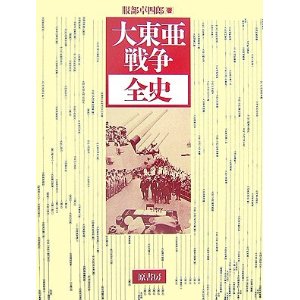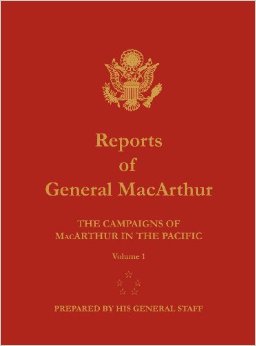
(Continuation from Part 1)
Mitsuko went about Tokyo seeking artists to paint war scenes from the Japanese point of view. This task was made much easier as Willoughby gave her permission to ride about in her own private jeep. This was a definite indicator of his affection for Mitsuko as all Japanese women were prohibited from even riding in any Allied military vehicle, let alone have one assigned to her.¹ With her purse flush with cash from Willoughby, Mitsuko paid starving artists large sums of money for art pieces depicting the war from the Japanese point of view. It was reported that she paid these artists up to several hundred dollars for one piece; this caused great dissension amongst the Japanese men who were assigned to compile the history. At that time, a year’s average salary rarely exceeded $150. Many of these men were also former Japanese military and were required to address their superiors as if they were still in the military. Kawabe ran the group as if it were still his army. Some of them found it dishonorable to be even working “for the invaders”, as my Tokyo grandmother liked to say.

Fraud was suspected with respect to Kawabe and Arisue. To further their spying, they asked for and received a tidy sum of money from Willoughby to supposedly increase spying activities on the Communists in the surrounding Asiatic regions. Similar to what is happening today but on a grander scale, some of these supposed spies just “disappeared” after receiving a supposed cash payment. While the CIA apparently came to the conclusion there was a scam going on, they failed to take remedial action.
In a further documented twist, the subservient Hattori was himself pursuing his own agenda in secret. Actually, he had two secret and separate agendas.

First, as he solely determined what would go into the Japanese-version of the history, Hattori was absconding with selected crucial documents that came across his desk. He had schemed that once “the invaders” left, he would write his way into history by publishing his own “true” version of the war against the Allies. By 1953, he was partly successful in that he did put together an eight volume history entitled “大東亜戦争全史”, or “The Complete History of the Great East Asia War”.
Second, he was gung-ho to re-arm the new Japan. It is reported that by 1949, the brilliant planner Hattori had drawn up a four division army with key officer positions already determined, complete with detailed arms and logistics laid out.
He passed away in 1960. In another twist of fate, his original publication was condensed into a thousand page book and published five years later under the same title.²
________________________________
As for Willoughby, he also pursued his own agenda. Yes, he was motivated to glorify his commanding officer, General MacArthur, in the history books. Using the funding from G-2, the project moved along out in the open. Most anyone knew about it although it was done under a military intelligence umbrella.
However, in late 1947, G-2’s history department requested copies of the documented history. In a bewildering response, Willoughby replied by saying it was not ready; he also replied in like for the Japanese volumes. But what made it bizarre was that he stated it was but MacArthur’s personal record – a report, if you will – of what happened during the war… Essentially, that it was not an official US Army publication. As such, it would not be subject to review and approval by the US Army prior to publication. However, in a kind gesture, Willoughby indicated they would receive copies once it was published.
Willoughby went to a former Army officer, General Stackpole, in 1948; he owned a publishing company specializing in military history. Due to the immenseness of the volumes, Stackpole declined participation on the grounds it was too large a printing effort for his company. Willoughby then sought out Japanese printing companies but they were still in shambles from the war. He was unsuccessful. It was reported unofficially that MacArthur had known, at least, of the attempt.
Eventually, five samples of the “report” were published in 1950 by a Japanese printing company with the assistance of Washington. However, during this time, Willoughby – for (their) mutual protection – ordered all extraneous documentation collected during this five-year project that may jeopardize MacArthur’s hero status destroyed… and they were. Even notes and drafts were burned. The burning was supervised on March 2, 1951 by two US Army officers assigned to Willoughby’s history detachment.
The reasoning and significance behind this burning at that time is now clear. On April 11, 1951, President Truman relieved General MacArthur of his duties for his handling of the Korean War. To give you an idea of the volumes of documentation collected yet remaining after the burning, MacArthur brought back 32 footlockers full of documentation. Willoughby himself brought three more which apparently contained the galley proofs. He claimed these were MacArthur’s personal property… a diary of sorts. Willoughby managed to convince the government to finally print the “report” in 1953; however, MacArthur intervened and squashed the agreement citing the documentation was full of errors and was just a draft. It was not printed.
 MacArthur did sell his memoirs for nearly $1 million in 1963 but like Hattori, MacArthur passed away soon thereafter in April 1964 and ironically never saw his memoirs published.
MacArthur did sell his memoirs for nearly $1 million in 1963 but like Hattori, MacArthur passed away soon thereafter in April 1964 and ironically never saw his memoirs published.
Nevertheless, the US Army finally did publish the two-sided “history” of WWII in 1967 after MacArthur’s death. The publication is entitled “Reports of General MacArthur” and can be read online at several websites. Previously owned hard copies are also available online. It is immense. From what I understand, the Army disclaimed any responsibility over its accuracy throughout its four volumes. It does contain the original Japanese artwork sought out by Mitsuko.³
Willoughby passed away in October 1972 in Naples, Florida. He is buried in Arlington.
_________________________________

In closing, I came across some information in the “Reports of General MacArthur” as to the action that potentially led to the combat death of my own Uncle Suetaro on Leyte near a village called Villaba…on Page 533 of Volume 2, Part 2. My Hiroshima cousins believe he was assigned to the Imperial Japanese Army’s 41st Mixed Regiment; it had been annihilated on Leyte. He was reportedly killed on July 15, 1945 but it is clear per MacArthur’s “report” that centralized Japanese army command on Leyte had ceased in March 1945 per this Japanese record.
Perhaps finding out exactly what happened to my Uncle Suetaro will only occur in a fairy tale. To realize I will never find out is my dragon to slay.
____________________________
Footnote:
1 Though I have yet to see one photo, my mother and aunt claim our Uncle Taro took them around what was left of Tokyo in his US Army jeep. Uncle Taro was a Private in the US 8th Army’s Military Intelligence Service.
2 Unbelievably, it is available on Amazon Japan.
3 Although I have scoured Japanese websites, only scant sentences can be found about Mitsuko. Her fate is unknown to me except for her grave marker.
